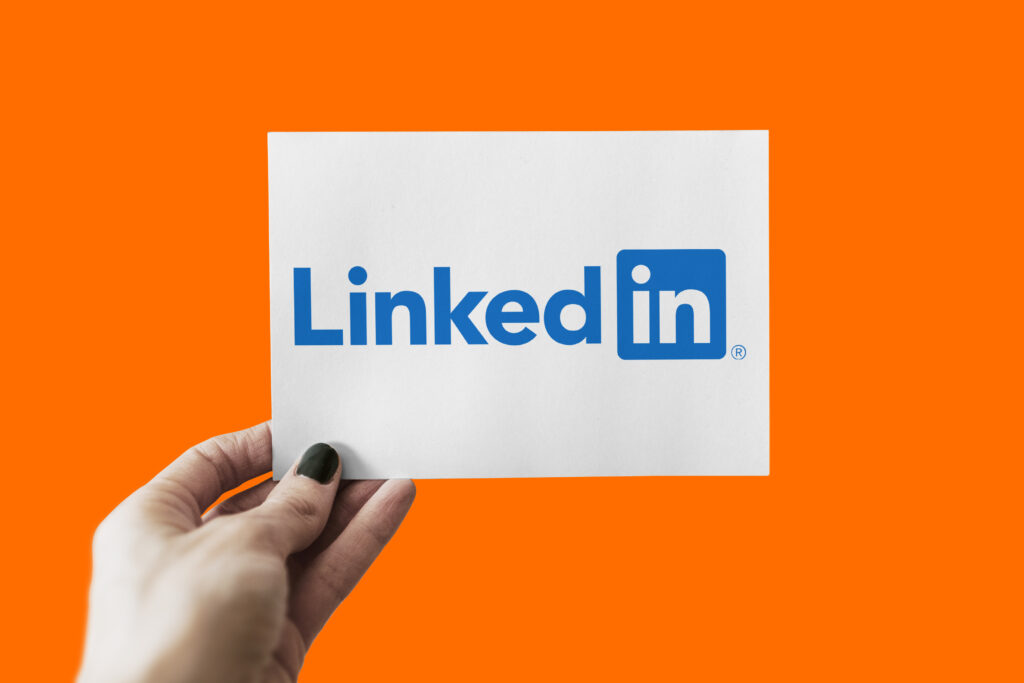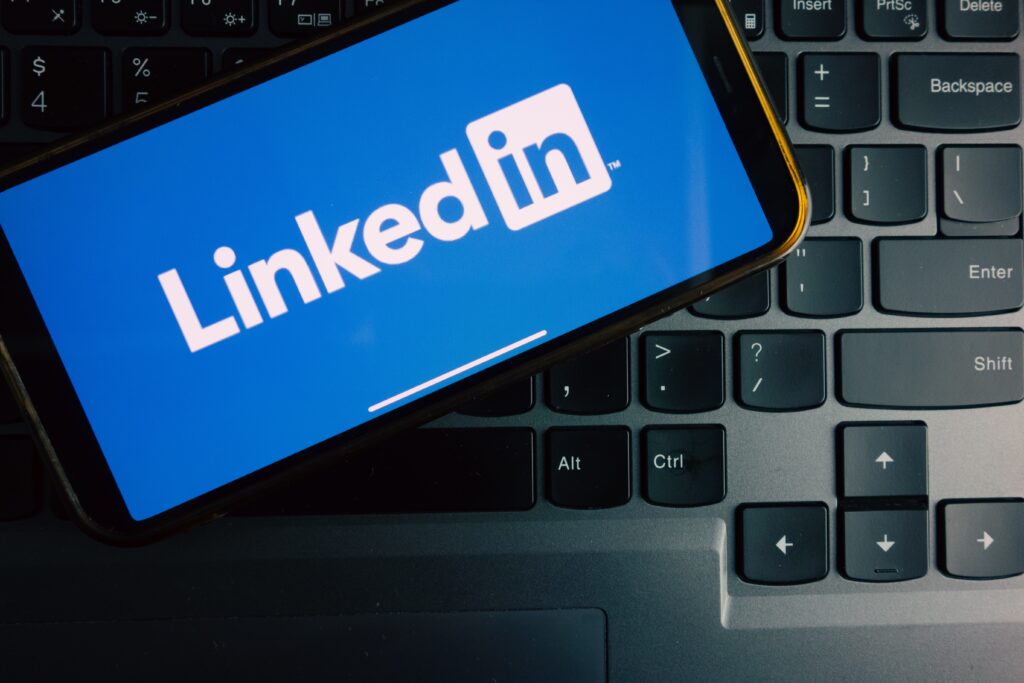LinkedIn, often hailed as the professional hub of the internet, has emerged as a powerhouse for paid advertising. While it may not be a new advertising platform, the way that it’s revolutionised paid ads is definitely noteworthy.
LinkedIn is a realm of untapped opportunities, especially for businesses operating in the B2B sector. In this guide, I’ll delve into the intricacies of how to create a LinkedIn audience so that you can unlock its full potential. And if that sounds like a boring way of learning, I’ve got your back: I have a YouTube video where I also walk through this in a lot of detail, so if you want to skip the reading, give that a watch here.
The LinkedIn advantage
Sure, other platforms like Facebook and Google have their charms, but building an ad on a LinkedIn page boasts a unique proposition – your entire business career encapsulated within a platform. From your first job title to the intricate details of your corporate journey, LinkedIn weaves a narrative unlike any other. This is not just a social network; it’s a digital resume on steroids.
Again, this sets it apart from other social networks because it caters to businesses specifically. When you create an audience, you can use this to your advantage. Depending on what it is you’re advertising, you can select to advertise to people in certain positions. You can select their seniority level. Their job titles. Their company size. How many years of experience they have. You can essentially fine-tune your target audience to the point where you can easily target your perfect customer.
Unravelling the mystery of LinkedIn audiences
So, you’ve decided to ride the LinkedIn wave for your ad campaign. But how do you tackle the challenge of building a target audience on this platform? I’m a big believer in the idea that simply spewing a bunch of facts at you won’t be much help.
It’s boring, it’s overdone, and quite frankly, it’s not effective. So, for this post, I’m going to use a strategy that I often use in my YouTube videos: I’m going to make up examples and then walk you through how I would approach them.
For context, I own my own ad agency, so I think I know what I’m talking about.
Doing things this way allows you to see an actual example of how audience building will work, which I believe will help you better envision things. You’re going to use your imagination for this one, but stick with me, and it will all be worth it in the end.

Example 1: a SaaS platform
Let’s pretend that I own a SAAS platform similar to Shopify, but I only cater to women’s fashion brands. How would I go about creating a target audience for this company?
1. Geographic position
If you sucked at geography in school and you’re sweating buckets right now, chill. Basically, this part is all about narrowing down which areas you want your ad campaign to target. Of course, this will depend on the business. For this example, let’s say that it’s a UK-based platform that also ships to the US. Cool. Those will be the geographies we include in our target audience.
We don’t want to waste money advertising our campaign to users in Africa if we don’t ship there.
Pro tip: you can also finetune it a lot more to exclude certain states or areas within your chosen geographies.
2. Demographic filters
Just as with other ad campaign platforms like Facebook or Google, you need to make sure that you are targeting your chosen demographic. In this scenario, you’re not going to want to spend thousands promoting the service to men if your platform is aimed at women. Think about their age. Think about what they’d be interested in. And use that to create your demographic.
Pro-tip: you can also exclude a certain type of LinkedIn profile to refine your matched audiences. Don’t just think about the type of customer you do want, but also the type of customer you don’t want.

3. Skills and interests
This is another area that will be very specific to what it is you’re marketing, and this is why I like to use examples! It’s all good to say “Consider skills and interests when building your LinkedIn audience” but who does that help?
You may want to get a practical look at what this means. In the case of our imaginary women’s fashion SaaS platform, we’re going to target women who are interested in fashion. But we’re really going to dive deep. We’re going to include women who are into fashion marketing, fashion design . . . you get the idea.
Pro tip: you can split test different skills to help you get the perfect audience.
4. Seniority
Remember how I mentioned earlier that one of the cool things about LinkedIn is that you can include or exclude people from your audience depending on their seniority? This is an example of how this is helpful,
If you’re running a fashion SaaS platform that’s going for a luxury price, you’re not going to target entry-level positions. They likely won’t have the sway needed in the company to actually convince someone to use your service.
Directors and executives, though? Those are the decision-makers. If they see your ad campaign and think your service is cool, they might be able to do something about it.

Example 2: SEO agency for personal brands
That was one example of how I’d build an audience for a specific company. Now I’m going to show you how my audience building strategy would differ for other companies. Let’s use an example that’s in a completely different niche from the SaaS fashion platform I came up with.
For this example, let’s use another fictional company; this time, an SEO agency that specifically helps personal brands. Our target for this would be, well, people who have their own brand. How would I go about creating a LinkedIn audience for this? How will it differ from the method I used for the SaaS company?
1. Seniority slicing
We’re focusing on seniority again, but this time, we’re trimming all the fat and focusing on the top-tier seniority positions; the cream of the crop. We’re looking at owners, partners, and directors.
Pro tip: exclude people in sectors that don’t align with your goals, regardless of their seniority level.
2. Tailor your audience to entrepreneurs
If you own an SEO agency that only works with personal brands, it makes sense that you’re going to want to target entrepreneurs, as these are the people most likely to have their own brands.
More than that, though, you want to tailor someone who has a lot of experience in entrepreneurship. So this is where the audience is different from the SAAS example, as we’re going to be honing in on years of experience. In this case, we’re looking at someone with at least eleven years of experience.
Pro tip: play around with excluding companies of certain sizes if you are specifically looking for businesses of a certain scale.

3. Precision exclusions
With the first example, we focused a lot on who I’d include in the audience. For this, because it’s such a niche market, my attention is going to be on weeding out irrelevant profiles.
If someone has an unrelated job title to my ideal customer, they’re out. If they work in an industry I don’t work with, they’re eliminated. It can be scary to narrow down your audience this drastically, but that’s what will give you results. If you’re new to audience exclusions, consider working with a LinkedIn Ads agency to help you get the results you need.
The art of A/B testing
Building your LinkedIn audience is not a one-size-fits-all endeavour. Hopefully, you can see that by the vastly different ways that I approached the audience building for two hypothetical companies.
Embrace the power of A/B testing. Don’t just create an audience and hope for the best. Come up with multiple audiences. Test different creatives and copy within those audiences. A/B testing will give you a lot of insight into what works and what doesn’t, so that you know where to focus your efforts.
Wrapping up
The final bit of wisdom I’ll leave you with is that it’s better to be precise. It may not seem that way at first. After all, the more precise you are, the smaller your audience will be.
But that’s a good thing because it means your audience will be filled with people who have the highest likelihood of being interested in your business.
And if you need help with this at any point, fill in the form below to work with Snowball Creations, a paid ads agency specialising in LinkedIn Ads (among other platforms).